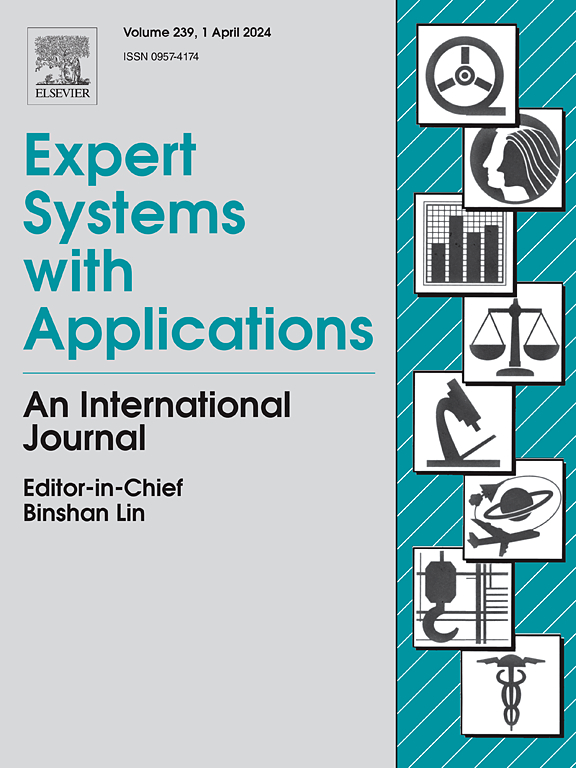用于工业表面缺陷检测的轻量级分层聚合任务排列网络
IF 7.5
1区 计算机科学
Q1 COMPUTER SCIENCE, ARTIFICIAL INTELLIGENCE
引用次数: 0
摘要
工业表面缺陷检测对保持产品质量至关重要,但它面临着复杂的背景干扰、众多的小缺陷以及缺陷特征的显著变化等挑战。为应对这些挑战,本文介绍了一种新型轻量级分层聚合任务配准网络(LHATA-Net),旨在提高检测精度、计算效率和泛化能力。LHATA-Net 包括四个创新功能:(1) 快速高效层聚合网络 (F-ELAN),用于高效特征提取;(2) 分层多尺度特征增强路径聚合网络 (HMFE-PAN),用于改进复杂背景中的小缺陷检测;(3) 轻量级任务对齐头 (LTA-Head),用于优化分类和定位之间的特征交互;(4) 滑动损失函数 (Slideloss),将滑动加权函数与二元交叉熵和对数损失函数整合在一起,以解决样本不平衡问题。为了更好地验证检测器,我们编制了一个大规模数据集 DsPCBSD+,其中包括实际工业生产中印刷电路板表面缺陷的真实图像。实验结果表明,LHATA-Net 只需 350 万个参数和每秒 18.4G 次浮点运算,就能达到每秒 54.2 帧的推理速度。此外,在两个钢铁表面缺陷数据集和 DsPCBSD+ 数据集上,当交叉联合阈值为 0.5 时,它的平均精度分别达到了 79.6%、70.0% 和 85.8%。与最先进的实时检测器(SOTA)相比,它分别排名第一、第二和第三。弗里德曼测试证实,LHATA-Net 在整体性能上超过了 SOTA 检测器,突出了其在实际工程应用中的优势。代码可在 https://github.com/Tarzan-Leung/LHATA-Net 上获取。本文章由计算机程序翻译,如有差异,请以英文原文为准。
A lightweight hierarchical aggregation task alignment network for industrial surface defect detection
Industrial surface defect detection is crucial for maintaining product quality, but it faces challenges such as complex background interference, numerous small defects, and significant variations in defect characteristics. To address these challenges, this paper introduces a novel lightweight hierarchical aggregation task alignment network (LHATA-Net) designed to enhance detection accuracy, computational efficiency, and generalization. LHATA-Net includes four innovative features: (1) a fast-efficient layer aggregation network (F-ELAN) for efficient feature extraction; (2) a hierarchical multiscale feature enhancement path aggregation network (HMFE-PAN) to improve detection of small defects in complex backgrounds; (3) a lightweight task aligned head (LTA-Head) to optimize feature interaction between classification and localization; and (4) a slide loss function (Slideloss) that integrates slide weighting function with binary cross entropy with logits loss function to tackle sample imbalance. To better validate the detector, we compile a large-scale dataset, DsPCBSD+, which includes real images of surface defects on printed circuit boards from practical industrial production. Experimental results demonstrate that LHATA-Net, with only 3.5M parameters and 18.4G floating point operations per second, achieves an inference speed of 54.2 frames per second. It also achieves average precision of 79.6%, 70.0%, and 85.8% at an intersection over union threshold of 0.5 on two steel surface defect datasets and the DsPCBSD+ dataset, respectively. It ranks first, second, and third compared to state-of-the-art (SOTA) real-time detectors. The Friedman test confirms that LHATA-Net surpasses SOTA detectors in overall performance, highlighting its superiority in practical engineering applications. The code is available at https://github.com/Tarzan-Leung/LHATA-Net.
求助全文
通过发布文献求助,成功后即可免费获取论文全文。
去求助
来源期刊

Expert Systems with Applications
工程技术-工程:电子与电气
CiteScore
13.80
自引率
10.60%
发文量
2045
审稿时长
8.7 months
期刊介绍:
Expert Systems With Applications is an international journal dedicated to the exchange of information on expert and intelligent systems used globally in industry, government, and universities. The journal emphasizes original papers covering the design, development, testing, implementation, and management of these systems, offering practical guidelines. It spans various sectors such as finance, engineering, marketing, law, project management, information management, medicine, and more. The journal also welcomes papers on multi-agent systems, knowledge management, neural networks, knowledge discovery, data mining, and other related areas, excluding applications to military/defense systems.
 求助内容:
求助内容: 应助结果提醒方式:
应助结果提醒方式:


